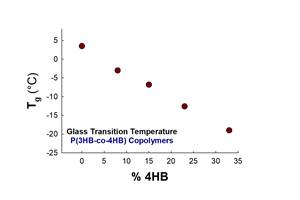In Memoriam: Blown Film Specialist Eric Hatfield
Advocate of MDO technology and die design succumbs to Parkinson’s disease.
Eric Hatfield, considered by many to be one of the top technical minds in blown film extrusion, recently due to complications from Parkinson’s disease. He was 67.
A graduate of Illinois Institute of Technology with a bachelor’s degree in chemical engineering, Hatfield’s career in film extrusion spanned five decades. He held technical and engineering positions for companies such as James River, Clopay, Novolex and Charter Next Generation. He was also co-founder of two companies, FlexTech Packaging Ltd. and MDO Engineering, both of Cincinnati.
At FlexTech, Hatfield became one of the first advocates of utilizing machine direction orientation (MDO) technology to improve blown film properties and yield. He was also an expert in blown film die design, and in fact wrote two articles for Plastics Technology on that subject in 2010 that are still relevant today. You can find them here and here.
Rick von Kraus is a longtime blown-film machinery executive who co-founded Addex Inc., where he still serves as chairman of the board. What follows are his recollections of his interactions with Eric:
“I first encountered Eric when he worked for James River in Indiana. We just had started Addex in August 1989 with the goal of serving customers we had gotten to know through our prior employment with suppliers of blown film equipment. Ricardo Rodriquez, as the designer, and I as the sales guy, had spearheaded the sale of a large rotating five-layer die made by Polysystem to James River. It was an improvement over the Sano dies James River had purchased up to that point.

“This opened the door for us, now under the Addex banner, to launch our first large order for two similar dies to be installed in James River’s new plant in Jackson, Tennessee. We also learned that for Eric, whose vote was crucial for us getting the order, new and better technology was much more important than the age of a company, as Addex was then just a few months old.
“Just a few years later James River’s blown film 大象传媒 was acquired by Printpack, providing Eric with a decision point: stay with the new owners or do something different. While he was exploring his options, we had him work for us for a few months. In those days, working remotely was not too much of an option, so it was understood as a brief engagement.
“And sure enough, Eric and Bob Bellafronto, another James River alum, started what became Eric’s career highpoint, FlexTech Packaging. In late 1998, they ordered and installed two Hosokawa Alpine five-layer lines in their Cincinnati plant. Typical of Eric, he designed and installed his own inline MDO. This was quite new technology at the time. He had developed an inline MDO unit previously for one of the James River lines in Jackson, but there was room for improvement as the MDO left thick edges after the stretching that had to be trimmed as scrap.
“Bob Cree, who had become a partner in Addex (and is now president) after leaving Mobil Chemical’s R&D department, developed with Eric a system that considerably flattened the edges and reduced the width of the required trim. Eric had installed already Bob’s superior automatic profile control system on the Alpine lines and thus had proof of his capabilities, and the two worked closely to develop this edge-thickness control as an extension to that system. The inline MDO with the edge thinner were all brand-new technologies at the time. MDO is now more common technology, but it all started with Eric. Eric also helped Addex make what we called an MDO Lite, an inline stretching unit that stretched the film approximately 3%, just enough to eliminate any bagginess.
“After the bank decided to change the management of Flex Tech, Eric left. First, he offered his MDO knowledge to whoever was interested, which kept him going for a while, but that customer base eventually dried out and he needed a steadier income, which several companies provided.
“Just a few weeks before he left us, he asked me whether I could help find venues for his presentations on MDO technology and another of his creations, the Green Dog die. The latter was a concept of a multilayer die that Eric discussed with Ricardo before he left Addex in 1997. Eric wanted to have one more chance to share his acquired knowledge. But Parkinson’s wouldn’t allow it.”
Related Content
Film Extrusion: Boost Mechanical Properties and Rate of Composting by Blending Amorphous PHA into PLA
A unique amorphous PHA has been shown to enhance the mechanical performance and accelerate the biodegradation of other compostable polymers PLA in blown film.
Read MoreWhat You Need to Know About Roll-Cooling Design
Cooling rolls might not look like high-tech machines, but the fact is there is a surprising amount of technology involved in their design, manufacture and use. Here’s what you need to know.
Read MoreHow to Decrease the Extrudate Temperature in Single-Screw Extruders
In many cases, decreasing the discharge temperature will improve product quality and perhaps even boost rate. Here are ways to do it.
Read MoreBreaking News From NPE2024
Here is a firsthand report of news in injection molding, extrusion, blow molding and recycling not previously covered.
Read MoreRead Next
Beyond Prototypes: 8 Ways the Plastics Industry Is Using 3D Printing
Plastics processors are finding applications for 3D printing around the plant and across the supply chain. Here are 8 examples to look for at NPE2024.
Read MoreSee Recyclers Close the Loop on Trade Show Production Scrap at NPE2024
A collaboration between show organizer PLASTICS, recycler CPR and size reduction experts WEIMA and Conair recovered and recycled all production scrap at NPE2024.
Read More











